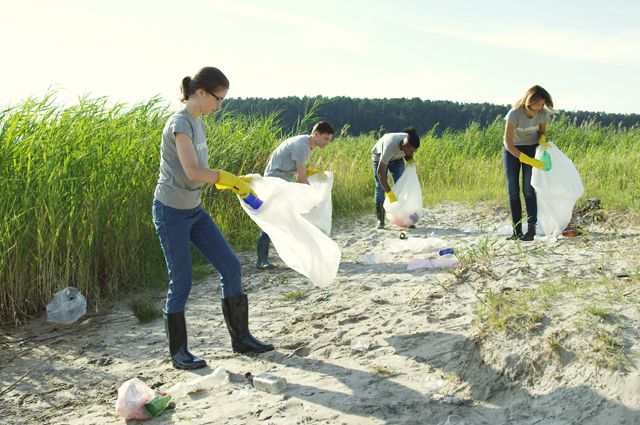Field National projects

For three years, 80 km of riverbeds have been cleared in Russia and more than 8.5 thousand hectares of land plans 39; water tanks have been restored. This is the result of the work of the federal project “ Preservation of unique water bodies ''. national 'Ecology' project. Thanks to this, the ecological living conditions of 9 million Russians have improved. & Nbsp;
Strategic resource & nbsp;
Large-scale restoration of rivers, reservoirs, lakes and ponds started in 2019. They are cleared of vegetation, debris and accumulated silt that impedes the flow of water and self -purification. To date, work is already fully completed on the Voronezh River in the Lipetsk region, the Seim River in the Kursk region, the Upa River in the Tula region, the Temernik River in the Rostov region and the Unzha River in the Vladimir region. This year water bodies are cleaned in Crimea, Bashkortostan, Mordovia, Tatarstan, Udmurtia, Bryansk, Vladimir, Volgograd, Voronezh and many other regions. In total, the federal project “ Preservation of unique water bodies '' 51 regions of Russia are involved. & nbsp;
“ Water & mdash; strategic resource of our state, & mdash; noted the head of the Ministry of Natural Resources of the Russian Federation Alexander Kozlov … & mdash; Despite the fact that the largest rivers flow through the territory of Russia, a number of regions are already facing a water shortage. Aquatic ecosystems are very vulnerable, and for decades their purity, which means that people's quality of life, the state of the environment, have not been given due attention. . Implementation of the national project & bdquo; Ecology & ldquo; launched large-scale changes in this area, and, most importantly, there are already practical results. & # 39; & # 39;
Here is an example of & mdash; in St. Petersburg this year, they completed the cleaning of the bed of the Smolenka River. It has not been cleaned for 15 years, which is why the depth has decreased and the flow has decreased. In two years, the 3.5 km section of the river from the Nalichny Bridge to the source was cleared of bottom sediment and flooded objects: barrels, cans and even a motorcycle. Divers participated in the clean-up. Smolenka has its source in the Malaya Neva, flows between Vasilievsky Island and Dekabristov Island and empties into the Neva Bay of the Gulf of Finland. During its long history, the river has changed its name several times: Myakusha, Chernaya, Glukhaya. It only became Smolenka in the 20th century as the Smolensk Cemetery, next to which it is located.
Tourist place
The federal project includes water bodies that meet at least one of the criteria: they are located in the territory registered in the register of objects of cultural heritage of the peoples of Russia; provide water for consumption and household needs of the population; valuable species of fish, plants and animals live there; the reservoirs are located within the boundaries of the settlements and are used by the population for recreation. & nbsp;
“ Often the rivers that enter the project do not even reach 100 km in length. But it is important to understand that it is they who feed the largest bodies of water, affect the degree of their water content and the hydrographic network of the country as a whole, & mdash; noted deputy head of Rosvodresursov Natalia Sologub . & mdash; The decision on the water plan to be restored is taken by the regional authorities. They are guided by the condition of the river or reservoir, as well as the demand of the people. & # 39; & # 39; & Nbsp;
In the Nizhny Novgorod region thanks to the national project “ Ecology & # 39; & # 39; cleared three rivers at once: Satis, Tyosha and Vichkinza. All of them pass through the territory of the Arzamas-Diveevo-Sarov pilgrimage and tourism hub. Another name for these places is & mdash; The Land of Seraphim is a land with unique architectural monuments and Orthodox shrines. Therefore, the ecological effect will be felt not only by 300,000 local residents, but also by a large number of tourists and pilgrims who visit the Land of Seraphim.
The Satis River is 89 km long, of which 14.5 km cross the territory of the closed city of Sarov. The water area of the river has been cleared of debris, silt deposits, sediment and fallen trees have been removed from the bottom. Its tributary, the Vichkinza River, was similarly purified. It passes through the village of Diveyevo & mdash; the crossroads of pilgrimage routes and an important administrative, economic and cultural center of the Nizhny Novgorod region. The Tesha River, the right tributary of the Oka, in the Arazmas region is heavily overgrown with plants. As a result, the speed of the current decreased, water exchange slowed, and areas near the coast were flooded. The federal plan will solve these problems. At the mentioned site, driftwood, vegetation detritus and debris will be removed. & Nbsp;
3,000 felled trees and over 18,000 cubic meters of gravel and sandy rocks will be removed from the riverbeds that flow within the boundaries of Yalta Urban District and Bakhchisarai Region … The safety of local residents depends on the carrying capacity of rivers. In mountainous areas, flooding processes develop instantly. Blockages pose a threat to human settlements, so it is important to free the chains as quickly as possible from all that is unnecessary. & Nbsp;
Work on the national project “ Ecology & # 39; & # 39; go to the largest reservoirs in the country: Bratsk, Sayano-Shushensky, Ust-Ilimsk, Irkutsk, Krasnoyarsk, Zeysk, Krasnodar, Volgograd, etc. Their water bodies are cleared of wood waste and debris. It is expected that this work will be completed within five years.


